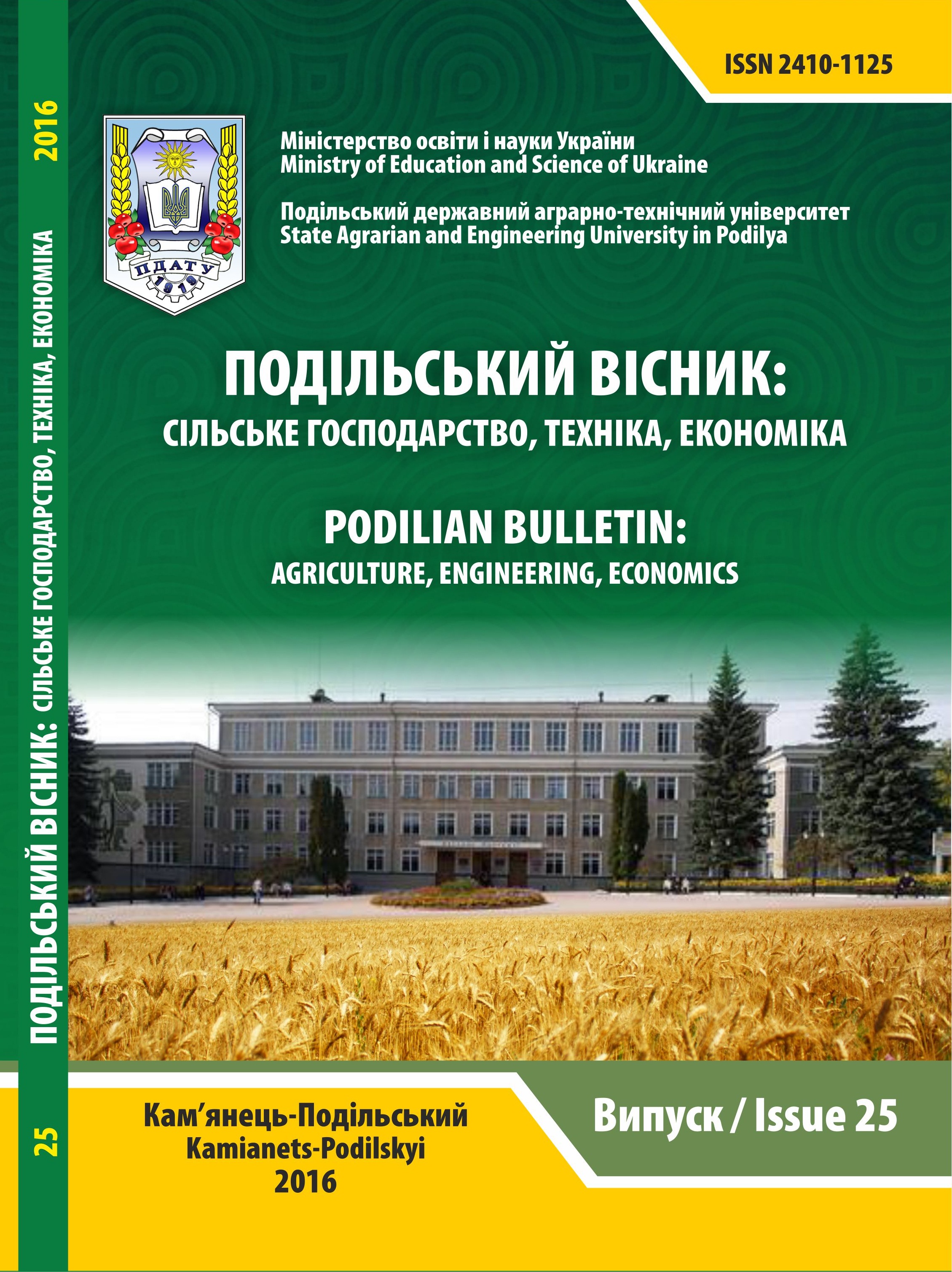Oil Content and Fatty Acid Composition in Spring Oilseed Crops
Keywords:
spring oilseed crops, spring false flax, fertilizers, rates oil content, composition, of fatty acidsAbstract
The objective of researches was to determine the content of glucosinolates and oil in seeds of spring oil crops: spring rape; false flax; mustard white; saperda (indiana) mustard; radish oil; flax oil. In order to assess the suitability of oil for food purposes it is necessary to determined their fatty-acid composition. Besides; the influence of fertilizers on the contents of oil and glucosinolates in seeds of false flax was evaluated. Methods: Determination of quality indices of oil seeds conducted by ISO. Much attention is given to the data of seeds oiliness of spring oilseed crops .It is snown that the highest oil content was flax oil – 51;5%; brown mustard – 45;8% and false flax –- 44;3%. The smallest oil content was in white mustard white – 40;6%. It is shown that the lowest content of glucosinolates is in spring rape (20;4 mmol/g) and false flax (21;5 mmol/g) that's why the oil because these oil crops used as food. As to the flax oil; the glucosinolates are absent. Study of the influence of fertilizers rates on seed oilnes of fertilizers rates on seeds oiliness of false flax showed; that on higher backgrounds of nutrition the oil contents decreased. Yell; if on the variant without fertilizers it was 46;7%; but on the background of N120R60K120 decreased to 45;7%; or 1%. Discussion: it should be noted; that determination of fatty-acid composition showed that of false flax oil and flax and the best fatty acid composition with predominance of linolenic (50;2% and 57;8%); linoleic (19;3% and 19;8%) and oleic (17;0% and 15;8%) acids. This composition ensures that the oil of false flax and flax can effectively reduce cholesterol levels and has other important medical properties.References
Poliakov, O. I. (2011). Ahrotekhnichni i bioklimatychni osoblyvosti formuvannia urozhainosti i yakosti nasinnia soniashnyku, soi, lonu, kunzhutu, ryzhiiu, molochaiu v pivdennomu Stepu Ukrainy: avtoref. dys. na zdobuttia nauk. stupenia d-ra s.-h. nauk : 06.01.09 "Roslynnytstvo" [Agronomy and bioclimatic features of formation of productivity and quality of seeds of sunflower, soybean, flax, sesame, false flax, milkweed in the southern Steppe of Ukraine (Unpublished Canditate thesis)] Dnipropetrovsk. [in Ukr].
Hryhoriv, Ia. Ia. (2010). Vplyv strokiv sivby i tekhnolohii vyroshchuvannia na yakist nasinnia yaroho ryzhiiu [Effect of sowing dates and growing technologies on the quality of seeds of Spring Camelina].Visnyk Natsionalnoho universytetu vodnoho hospodarstva ta pryrodokorystuvannia. Seriia "Silskohospodarski nauky", № 2(50), 52-57. [in Ukr].
Lykhochvor, V. V., Petrychenko, V. F., Ivashchuk P. V., & Korniichuk O. V. (2010). Roslynnytstvo. Tekhnolohii vyroshchuvannia silskohospodarskykh kultur [Crop. Technologies crop].Lviv: NVF"Ukrainski tekhnolohii. [in Ukr].
Drozd, I. F.(2011). Zhyrnokyslotnyi sklad nasinnia lonu oliinoho v umovakh zakhidnoho rehionu Ukrainy [Fatty acid composition of seed flax in a western region of Ukraine]. Biuleten Instytutu
zernovoho hospodarstva, 40, 72-76. [in Ukr].
Liakh, V. O. & Komarova, I. B (2010). Vmist ta zhyrnokyslotnyi sklad olii ryzhiiu yaroho [The content and fatty acid composition of camelina oil spring]. Biuleten Instytutu zernovoho hospodarstva, 38, 137-142. [in Ukr].
Demydas, H. I. & Kvitko, H. P. (2011). Ryzhii posivnyi — oliina kultura alternatyvna ripaku yaromu dlia vyrobnytstva biodyzelia [Ginger planting - oilseed rape ravine alternative for biodiesel production]. Zbirnyk naukovykh prats VNAU, 8 (48), 3–8. [in Ukr].
Duran, K. (2013). Determination of fatty acid composition on different false flax (Camelina sativa (L.) Crantz), genotypes under Ankara ecological conditions. Turkish Journal of Field Crops, 18(1), 66-72.
Abramovi, H., & Abram, V. (2005). Physico-Chemical Properties, Composition and Oxidative Stability of Camelina sativa Oil. Properties of Camelina sativa Oil, Food Technol. Biotechno, 43, 63–70.
Budin, J. T., Breene, W. M., & Putman, D. H. (1995). Some compositional properties of camelina (Camelina sativa L. Crantz) seeds and oils J. Am. Oil Chem. Soc, 72, 309–315.
Ianovych, V. P., & Makolkina, O. V.(2011). Ekonomichna efektyvnist vyroshchuvannia ripaku dlia vyrobnytstva biopalyva [Economic efficiency of cultivation of rapeseed for biofuel production]. Zbirnyk naukovykh prats VNAU, 48, 217-221. [in Ukr].
Downloads
Published
How to Cite
Issue
Section
License
Copyright (c) 2019 Podilian Bulletin: Agriculture, Engineering, Economics

This work is licensed under a Creative Commons Attribution-NonCommercial 4.0 International License.
Authors contributing to Public Policy and Administration agree to publish their articles under a Creative Commons Attribution-NonCommercial 4.0 International (CC BY-NC 4.0) License, allowing third parties to share their work (copy, distribute, transmit) and to adapt it, under the condition that the authors are given credit, and that in the event of reuse or distribution, the terms of this licence are made clear.



